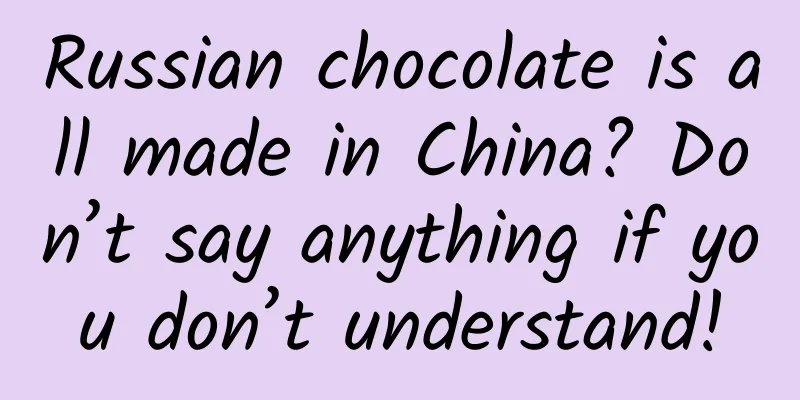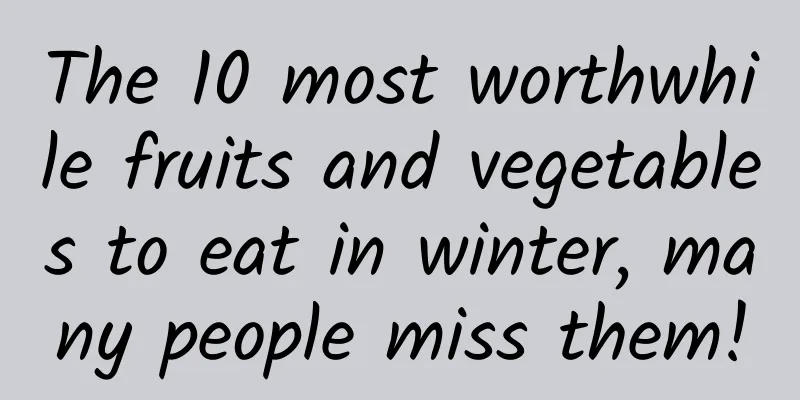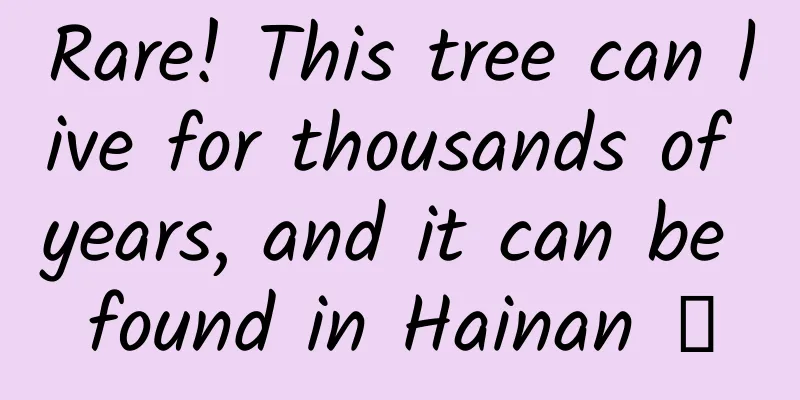Russian chocolate is all made in China? Don’t say anything if you don’t understand!

|
Xin Jifei, who has become popular online for his "technology and hard work", recently made another "hard statement": he claimed that Russia is located in the north and does not produce cocoa beans at all, so it cannot produce chocolate products, and thus asserted that "all Russian chocolate on the market is domestically produced"... But this time not many people bought his statement. After this statement came out, Xin Jifei was fiercely criticized by netizens. So the question is, can Russia really produce chocolate? Previously, Science Popularization China introduced the production method of chocolate. At that time, it was mentioned that traditional chocolate production is inseparable from the cacao (Theobroma cacao) tree that only grows in tropical regions. In this case, can other countries outside the tropical regions not produce chocolate? Of course not . China has long relied on imports to obtain cocoa beans, the core raw material of chocolate, to produce chocolate. Moreover, importing cocoa beans from tropical regions is not the only way out. Our country has even achieved the export of cocoa beans. Let's talk about this story of chocolate. 01 From cocoa to beans Cocoa is native to the humid rainforests in tropical America. It requires a humid, warm climate and special pollinating insects. According to the traditional classification method, cocoa belongs to the Sterculiaceae family. However, in the new classification system (APG system) compiled with reference to molecular biological evidence, the old Sterculiaceae family was merged into the Malvaceae family and became the Sterculiaceae subfamily. Therefore, cocoa has a closer "household registration" relationship with cotton and linden . As a tree, the cocoa plant is not very tall and has the phenomenon of " flowers growing on old stems ". The flowers look like they grow directly from the trunk, and the fruits are also hung on the trunk. Compared with the inconspicuous milky white flowers, the cocoa fruit is huge, each weighing several hundred grams, shaped like a rugby ball, with more than a dozen seeds inside. Each seed is wrapped in a white, gelatinous "pulp". When fresh, the cocoa "pulp" tastes sweet and sour, a bit like mangosteen . Although it is also delicious, this "pulp" is useless when processing and making chocolate. After the cocoa fruit is harvested, it will go through processes such as ripening, fermentation, and drying, and only the seeds are left in the end. This is the finished cocoa bean. 02 From import to export The entire process, from the harvesting of the fruit to the birth of the finished cocoa beans, is completed in the cocoa producing areas. At present, the world's leading cocoa bean producer is Cote d'Ivoire in West Africa , which accounts for more than 40% of the global production, followed by Ghana, Indonesia, the Dominican Republic, Cameroon and other countries. In other words, the current production of cocoa beans is not concentrated in tropical America, the origin of cocoa, and this plant has been introduced to many tropical countries and regions around the world . There are also some areas in southern China that are warm and humid enough for cocoa to grow, and these places have also introduced cocoa as an economic crop. Hainan grows cocoa. In the 1980s, Hainan's cocoa production was already considerable. Later, due to various factors, the commercial cultivation of cocoa here has been at a low point, with an annual output of only 10 to 20 tons. This amount is far from meeting the needs of domestic chocolate production, so most domestic chocolate brands rely on imports for raw materials. Adding up various cocoa raw materials such as cocoa beans, cocoa powder, and cocoa butter, China imports more than 100,000 tons of chocolate raw materials every year. However, with the efforts of many parties, China exported Hainan cocoa beans to Belgium for the first time in October 2020, proving that the quality of domestic cocoa beans has been internationally recognized . However, the total export volume at that time was only 500 kilograms. While completing a historic breakthrough, it also illustrates the current status of domestic cocoa bean production from another perspective. 03 From cocoa beans to chocolate After chocolate manufacturers around the world buy cocoa beans, they will wash, shell and roast them, and then grind the kernels to obtain a fine "chocolate paste". After separation and filtration, the "chocolate paste" can be obtained into cocoa powder and cocoa butter. The main ingredients of the dark chocolate we usually eat are cocoa powder and cocoa butter; while white chocolate only uses cocoa butter without cocoa powder. On the packaging of many chocolates, there will be a percentage marked. This number refers to the proportion of cocoa beans in the chocolate. The larger the number, the higher the proportion of cocoa beans, the less sugar, milk and other ingredients, and the more bitter it tastes. Wait a minute, since the cocoa powder and cocoa butter are going to be mixed together in the end, why not just use cocoa beans to make chocolate? In fact, the earliest chocolate was indeed made in this way, but it was just... not so delicious. In the tropical regions of America, where cocoa originated, the indigenous people first used ground cocoa beans, corn, chili peppers, honey and other ingredients to make beverages . This beverage tastes sweet, bitter and spicy, and it needs to be foamed before drinking. There is a view that the word chocolate is a transliteration of "bitter water" or "foaming water" in the language of Native Americans. The powder directly ground from cocoa beans, which is the raw material of this chocolate drink, tastes bitter and sour. If today's chocolate still tastes like this, it is probably difficult to become popular. So how did chocolate "evolve"? This had to wait until cocoa beans traveled across the ocean from their place of origin in America to Europe. In 1815, Dutchman Coenraad Johannes van Houten invented the alkalization process of cocoa beans , which can increase the aroma and reduce the bitterness. In 1819, Swiss Francois Louis Cailler invented solid chocolate , and chocolate gradually moved from a liquid beverage to modern chocolate. However, compared with modern chocolate, the solid chocolate at that time still tasted very rough. In 1828, the Dutchman Houten mentioned above invented a machine that could separate cocoa powder and cocoa butter . And he found that if the cocoa powder and cocoa butter were separated first and then mixed, the chocolate made in this way would be more fragrant, smooth and delicate. In the late 19th century, after improvements by companies such as Nestlé and Lindt, modern chocolate appeared. Having said so much, to sum it up: modern chocolate originated in America thousands of years ago and was born in Europe in the 19th century . To this day, European companies still account for the majority of the world's most well-known chocolate producers. Since cocoa can only grow in tropical areas, both foreign brands and Chinese brands basically need to import cocoa raw materials from tropical countries and regions. However, in the production process of chocolate, the production of its raw material cocoa beans is separated from the processing and production of the final chocolate . Therefore, regions that do not produce cocoa beans can also obtain raw materials and produce delicious chocolate that is loved by the public. References: [1] Zhu Zihui. Overview of the world cocoa industry and suggestions for developing Hainan's cocoa industry[J]. Tropical Agricultural Sciences, 2003, 23(3): 28-33. [2] Zhao Xizhu, Lai Jianxiong, Li Fupeng, et al. Current status and prospects of cocoa industry development in my country[J]. Chinese Tropical Agriculture, 2018 (5): 4-5. Author | Wu Changyu Review | Gu Lei, Associate Professor, School of Life Sciences, Capital Normal University |
Recommend
Why do individuals and institutional investors love mobile phones so much?
An outsider claims to make the best mobile phone ...
World Hand Hygiene Day丨Teach you the correct hand washing posture
To prevent COVID-19, good hand hygiene is a key p...
Is life span closely related to drinking? A survey of 11,558 drinkers finally revealed the answer
During holidays, it is not uncommon to hear news ...
Web Development Trends in 2015
[[126116]] The Web was originally conceived as a ...
This "national treasure" can truly reproduce all earthquake activities recorded by humans!
On November 5, the national major scientific and ...
What are the conditions and steps required for Baidu V certification?
V certification definition: It presents the compr...
Douyin and WeChat Reading violate users’ personal information (with original text)
Douyin and WeChat Reading violated user personal ...
The most searched topic! Cleaning a moldy wardrobe can cause mold to grow in your lungs! Can you still touch moldy things?
Recently, an unexpected piece of news topped the ...
A must-read for mid to high-level operators! How to build a product operation system based on business logic?
Special reminder: This article is a long logical ...
How do social apps play with “relationships between men and women”? Let’s take a look at these nine dimensions.
social contact? Hook up? In the eyes of many peop...
Unexpectedly! This place on earth is the best place to see the stars
"Sitting on the ground, I can travel eighty ...
Want to do a good job in Apple Store ASO? Android store must be taken seriously!
Today we are still talking about ASO . When it co...
We are all noodle-related! People from all over the country cheer for biangbiang noodles
Come on, Xi'an! Source: People's Daily We...
Three steps to do a good job in content operation of driving test products
1. Understand the target audience of the content ...









